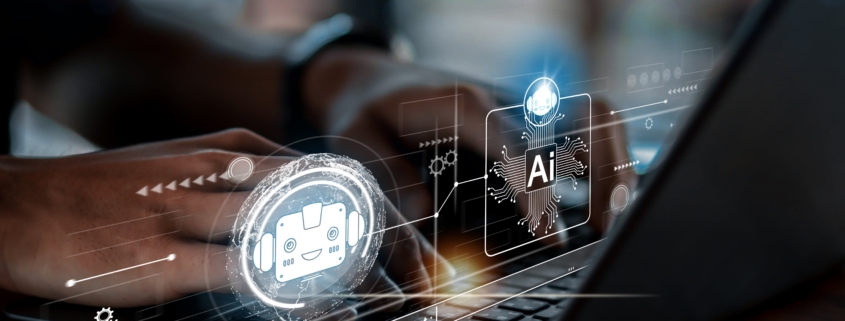AI in Language Translation: Breaking Down Barriers for Global Communication
The Global Effect of AI Translation
Artificial intelligence has already had a dramatic effect on many sectors, and language translation is one which stands out as being particularly impacted. With productive communication vital in a world that is increasingly linked together regardless of traditional borders, AI translator tools are playing a key role in bringing people, businesses, and myriad organisations together. AI translation’s machine learning algorithms can process data swiftly and efficiently, all the while performing analysis and learning about the planet’s languages. Everyone is surely familiar by now with the chatbots which are increasingly used in customer service applications. Companies use these bots, which, thanks to AI translation, can operate in multiple languages, to support customers who have queries or problems and solve the issues quickly, with the aim of boosting client satisfaction levels. They too, learn as they work and, assuming the knowledge is put to the appropriate use, benefit from a consequent improvement in their performance.
The Attraction of the AI Translation Tool
AI translation with technology such as ChatGPT translation has tempted plenty of businesses to get on board. Many are attracted by the speed of the technology in delivering translations and its accessibility and potential for widespread implementation. The versatility of AI translation is also a selling point, with the learning and improvement benefits meaning it can gain the ability to translate specialised content across a range of industries. Falls in the cost of AI language translation programs have not gone unnoticed: Cost-effectiveness is always appealing to companies and is invariably an important factor when embarking on new ways of working.
The Pros and Cons of the Deep AI Translator
Neural machine translation is a form of deep AI translator which can use what it has learned to construct neural networks which utilise previous experiences to improve AI translations. The approach is something more akin to the human brain than a computer, enabling algorithms to learn without the need for human guidance and also add new languages to their linguistic portfolio. Nevertheless, in spite of these attributes, neural machine translation does not produce totally accurate translations and cannot replace human translators. Indeed, AI translation is not necessarily the catch-all answer to every translation need.
The Drawbacks of AI Translation
AI language translation certainly has its hurdles, with one of the main areas of concern being the possibility of bias in AI translation tool algorithms, which sometimes result in inaccurate or offensive content. This problem stems from occasions when the training data used to teach the AI translator contains biased or prejudiced language; the AI translation tool can then inadvertently repeat these prejudices in its AI translations. There is also the issue of translating idiomatic expressions and cultural references, which an AI translation tool might find difficult — particularly if there are no direct equivalents in other languages. AI translation tools might have made some progress in this area, but there remains much room for improvement and, given the global nature of the subject, it is a critical area. Further research and development in AI translation and machine learning techniques is vital if the effectiveness of AI language translation is to evolve.
The Advantages of Human Translation
Even ChatGPT admits that “language is a system of communication used by humans.” Who better, then, to perform work such as document translation services than the professional — and human —team at TW Language Services? Only people can work in a culturally sensitive fashion, using their understanding of such delicate matters to ensure accurate and tactful translations which do not tread on any cultural sensibilities. The question of linguistic nuance is another area where humans outperform AI translation tools; human translators can grasp context and meaning and convey it in the target language. Idiomatic expressions and humour are often troublesome areas for even the best AI translator, while humans are well-versed in things which can so easily trip up AI translation tools.
Accuracy and quality are just two of the vital elements offered by any professional document translation agency, and at TW Languages they are two of the incontrovertible watchwords of our skilled and experienced team. Proofreading and editing are essential components which humans can deliver over AI translation platforms. They are also able to ask questions of the client and flag up issues to head off potential errors or misunderstandings.
Conclusion
Both human and AI translation have their advantages and disadvantages. AI translation tools are fast, but that has to be balanced by their lack of understanding of cultural issues and the unique nuance of language — which is just one of the areas where human translators shine.
TW Languages is a multi-lingual translation and transcription service provider specialising in technical and scientific translations in up to 250 languages. To experience the personal touch of the human translators at TW Languages, get in touch with us today.



